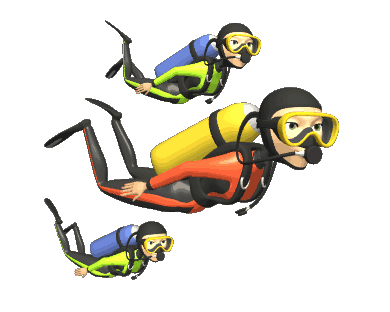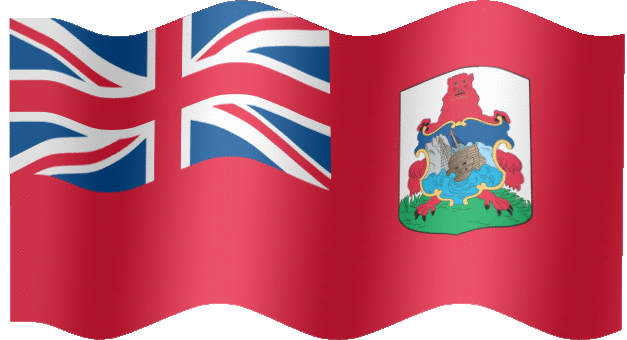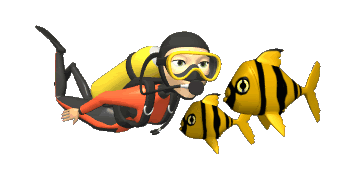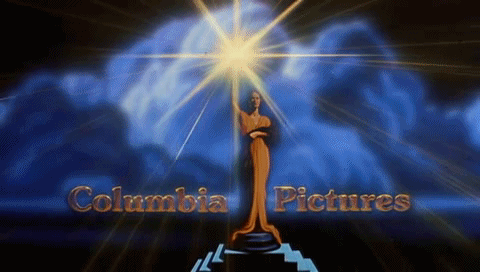

.com

Estd. 2020
Centenary
Project
2027

Approved by the Shaw Family







"I'm all the government you need boy"

"I'm shattered. We had some good times together. Jackie Bisset was in tears and just couldn't speak. I'm going to write to all of his family."


trailer
Robert Shaw as Romer Treece

In Bermuda, two amateur treasure-hunting divers have a run-in with local criminals when they inadvertently discover the secret cargo of a World War II shipwreck.
Directed by Peter Yates
Screenplay by Peter Benchley and Tracy Keenan Wynn from the novel by Peter Benchley
Produced by Peter Guber and George Justin
Music by John Barry
Cinematography by Christopher Challis
Edited by David Berlatsky
Also starring Nick Nolte, Jacqueline Bisset, Eli Wallach, Robert Tessier, Earl Maynard and Louis Gossett Jr.
Released by Columbia Pictures
Release Date: June 17th 1977
Running Time: 124 minutes
Location(s): Bermuda, British Virgin Islands and Australia
Filming commenced: July 6th 1976











gallery






the lighthouse
Deleted Scenes - Part 1
Deleted Scenes - Part 2
Footage of some deleted scenes from the theatrical release which were filmed for the three hour tv version. Watch out
for Roberts son Colin playing a young Romer Treece.
Footage of some deleted scenes from the theatrical release which were filmed for the three hour tv version. Visit YouTube to watch as its age restricted.
Official Movie Soundtrack
Enjoy a selection of music from the film composed by the inimitable John Barry.
challenge of the deep
rare behind the scenes featurette.
ABC TV Trailer
Another rare TV promo from American Television in 1980.
Opening Titles
Enjoy the opening titles to the movie in stunning HD.
It's voodoo!
Gail is terrorised by Cloche's witchdoctor.
Kevin's Demise
Re-live the thrilling fight scene between Kevin and Ronald.
Deep down Inside
Title track performed by Donna Summer.
Treece meets Cloche
Robert confronts Louis Gossett Jr. in this tense scene at the cricket ground.
BISSET INTERVIEW
JACKIE BISSET RECALLS HER WORK ON THE DEEP.
Teddy Tucker
Teddy Tucker documentary. Tucker was the inspiration for Romer Treece.




![now showing GIF_thumb[1].gif](https://static.wixstatic.com/media/51f4b8_c475c3f62240416ea489b9651df68e26~mv2.gif)


PRESS PLAY

the making of

Presented and Narrated by Robert Shaw

This documentary treats movie fans to a behind the scenes look at the making of The Deep, about a vacationing couple that becomes involved in a dangerous treasure hunting expedition in Bermuda.
Included are interviews with the cast and crew who share their experiences from making the film, as well as discussing the efforts that went into it.
Directed by Carl Foreman
Written by Peter A. Lake
Featuring Nick Nolte, Jacqueline Bisset, Peter Yates, Louis Gossett and Peter Benchley
Running Time: 60 minutes
Air Date: September 11th 1977
Released by CBS Television USA
gallery




DIRECTOR
Peter Yates
(1929 - 2011)
"Robert Shaw often steals the show
whenever he is on screen."

"Shaw plays his part with such colourful crustiness."



This is another movie that Shaw did for the money on the back of his fame from Jaws. He did not much rate it but I really like it.
It is a simple plot about treasure and drugs and Robert is on good form as the crusty treasure seeker Romer Treece. We get to hear his Cornish accent in this movie (he grew up there as a child) and he has great chemistry with Jackie Bisset and Nick Nolte.
The underwater scenes are too long but there is enough drama to keep the film flying along. A great score from John Barry and some superb underwater photography add to the mix and the film keeps you on the edge of your seat right until the end. It is Jaws-lite, but very entertaining all the same.

Robert meets Prince Charles at the Royal Premiere in 1977.



Jacqueline
Bisset
(1944 - )

Nick
Nolte
(1941 - )

Louis
Gossett Jr.
(1936 - 2024)

Eli
Wallach
(1915 - 2014)

Robert
Tessier
(1934 - 1990)

Earl
Maynard
(1935 - )

Dick Anthony Williams
(1934 - 2012)

boston premiere
Boston Harbour, MA, USA
Thursday June 16th 1977


Lobby Card Gallery

It was a case of throwing his money in the water, a multi-million dollar motion picture budget in this instance.
First-time producer Peter Guber, a former Columbia Pictures executive, had just launched his own independent production company.
He was looking for the sort of tent-pole project which would establish his reputation — and do what the industry calls boffo box office — in hyper-competitive Hollywood.
In the winter of 1975 Mr. Guber, then 34, found what he was looking for.
After reading the pre-publication galley proofs of The Deep” — Peter Benchley's follow-up novel to Jaws, a pop culture phenomenon both as a book and a movie — he engineered a $500,000 deal to acquire the film rights.
“I knew this was it,”Mr. Guber said later. The Deep was the story of a young couple honeymooning in Bermuda. They are swept up in a whirlpool of danger and intrigue when exploring the shipwreck of The Goliath, a merchant ship sunk in a hurricane in 1943.
“They stumble headlong onto a long-hidden cache of illegal drugs. Lying beneath the iron wreck of the Goliath is something else. David and Gail, our young newlyweds, discover a Spanish treasure so valuable as to defy logic. Theirs is the quest to uncover what is down in The Deep, why it is there and get it up.
“In doing this, they are forced by circumstance into an unholy alliance with Romer Treece, a Bermudian treasure expert, recluse and living legend. The Deep is the story of what they go after … and what goes after them.”
Mr. Guber shared the critical view that the novel lacked "the maxilliary crunch of the well-oiled thrill machine which was “Jaws”.
But he nevertheless believed the book stood on its own merits as a compelling action/adventure sea story, featured an exotic setting in the form of Bermuda and would climb the international bestseller lists.
He was proved correct about the novel’s appeal when the book was published to positive reviews in 1976 It is a better book than ‘Jaws,” said Time magazine and became a widely popular beach read that summer.
Privately, though, the novice producer was uncertain whether it was logistically possible to make a movie version of the book that could tap into the built-in worldwide audience eager to see what Mr. Benchley had delivered as an aquatic follow-up to “Jaws.”
“If i actually had first-hand experience of any water-based productions at the time, I probably would not have touched The Deep, Mr. Guber later admitted. Many difficulties of making The Deep were obvious …
“Certain things cannot be directed by the simple commands, ‘Lights, camera action! One of these is animals …Weather is another, and a particularly agonising ingredient when millions of dollars are staked on it.
“But the worst, the very worst of all the taboos, is water — Public Enemy Number One in filmmaking, to be avoided whenever possible. Filming The Deep would involve all three. The warning flags were at full mast.”
But there was to be no turning back. It was, as Mr. Guber ruefully admitted later, a genuine case of sink or swim.
After recruiting director Peter Yates and a cast headed by Robert Shaw, Jacqueline Bisset, Nick Nolte and Louis Gossett Jr. for his inaugural film project, Mr. Guber enlisted the financial support of his former employers at Columbia Pictures. The major Hollywood studio agreed to pump millions of dollars into The Deep in return for distribution rights.
With a screenplay underway by author Mr. Benchley and Tracy Keenan Wynn (James Bond scriptwriter Tom Mankiewicz provided a final polish), the producer then decided Bermuda would play itself in the film – although stand-ins were considered, including Florida and Catalina, an island off the California coast.
“The story is set in Bermuda but that does not necessarily mean that Bermuda is the automatic location choice, said Mr. Guber. “It’s not simply the physical setting you take into consideration when planning a location shoot but a grab-bag of other factors, too: transportation, communication, housing, convenience of film labs and the cost — of everything.”
Mr. Guber eventually cast Bermuda as itself in the film for a variety of reasons — its infrastructure, the islands proximity to processing laboratories and other production facilities in New York and the fact he could keep his budget down if he shot outide the US and employed a largely British crew.
After some initial qualms "Bermudans are not too crazy about The Deep's portrayal of their country,” conceded Mr. Guber, the Bermuda Tourism Department agreed to help facilitate the production.
Aside from the international exposure the island would gain when the film was released, the location shoot during the summer of 1976 would inject $5 million into the local economy.
While most of the film did boast an authentically Bermudian setting and character (hundreds of locals are featured in a colourful Cup Match sequence – former Tourism Minister and broadcaster Jim Woolridge can be heard on the soundtrack providing the commentary), some Hollywood creative geography was employed during the production: a wreck in the British Virgin Islands which virtually duplicated Mr. Benchley's description of the fictional Goliath was used for a number of underwater sequences and a shark attack scene was filmed by a second unit in Australia.
Another factor which ensured the production would have a Bermudan flavour as inimitable as sherry pepper-laced fish chowder was the decision to press-gang maritime adventurer Teddy Tucker into service as an all-purpose local go-to guy.
“Romer Treece, the arrogant and authoritative treasure diver Benchley created for The Deep is not a total fabrication, said Mr. Guber. He’s inspired by a good friend of Benchley's who was a fascinating character in his own right.
“Teddy Tucker looks less like the hulking St. David's Islander described in the novel then like a roly-poly Bermudan Teddy Bear, but his exploits as a diver and shipwreck expert easily rival Romer Treece's. They are the stuff of real-life legend.
“Teddy and his attractive wife, Edna, live in a big old house filled with museum-value artifacts and antiques…On our first loction trip, we had met the legendary man who had inspired the story and we managed to lure him back to The Deep as a consultant on the film.”
After completing location work in the British Virgin Islands, the cast and crew of The Deep arrived in Bermuda at the end of July, 1976.
Billeted at the Southampton Princess Hotel (much to the filmmakers bemusement, a placard proclaiming the hotel as “Home of The Deep!”was set up in the main lobby), the production headquarters for the movie was at the old Royal Naval Dockyard.
“At a mere 22 miles long and an average of one mile wide, water is almost everywhere you look in Bermuda,” said Mr. Guber. The South Shore is one gorgeous pink beach after another, all overlooking that vast turquoise sea.
“ Bermuda looks like a gorgeous botanical garden gone mad. And the rainbow-coloured Bermudian houses fit right into this picture postcard of a landscape, nestling cozily amid the greenery like Easter eggs in a bed of moss.
“All in all, Bermuda has such a clean, bright almost unnaturally colourful beauty, that it inspired our production designer Tony Masters to sputter bemusedly, on an early location recce, It’is hard to find locations that look real here — this whole place looks like one giant movie set!”
But Mr. Masters eventually found his locations: a full-scale replica of the St. David's Lighthouse was constructed at a desolate spot on Coney Island; Marley Beaches and Ariel Sands substituted for Mr. Benchleys fictional cottage colony, The Orange Grove Club;and the Southampton Arms bar became the hang-out for Treeces treacherous sidekick, Adam Coffin (played by Eli Wallach).
The Maritime Museum stood in for the Hamilton Library in scenes involving David and Gail researching the graves of ships wrecked on Bermudas reefs.
A chase sequence (Mr. Nolte and Ms Bisset being pursued on rental Mobylettes by a Globe Forwarding van — quite a comedown for director Mr. Yates, who choreographed Steve McQueens legendary high-speed pursuit of the villains in Bullitt) was staged on Langton Hill and near Mangrove Bay.
Full-scale interior sets of Treeces lighthouse home were constructed in empty Royal Navy warehouses at Dockyard which became vast ersatz sound stages for the production crew.
And Wellington Oval was cast as itself for the Cup Match sequence.
“The game itself is rather decorous but Cup Match itself has a lively atmosphere,” said Mr. Guber. Booths and tents crowd the paths surrounding the field; liquor flows freely; fans don their wildest clothes and most raucous spirits for the event…
“Happily, most spectators took no notice of our hand-held cameras as we worked our way through the crowd. Some did dart up to shake Robert Shaws hand, but even that worked perfectly since, as Romer Treece, he’is known and accorded respect by everyone on the island.”
By far the largest set built for The Deep was an enormous, urethane-lined tank at Boaz Island, some 120-feet wide and 30-feet deep.
Interiors of the shipwrecks explored by the films heroes were constructed at Dockyard and lowered into what the crew nicknamed BUS (an acronym for worlds Biggest Underwater Set” — it was at the time) along with the coral lair of a 12-foot moray eel which dispatches the villain Cloche during the films climax.
When flooded with a million gallons of seawater, the tank was stocked with fish and other marine life and allowed the production team to control lighting and other technical aspects of filming which would not have been posible using real underwater locations.
“It was a total, absolutely authentic underwater environment, the biggest such undertaking in the world,” said Mr. Guber. That way we could do all the key establishing exterior shots on the actual wreck in the Caribbean off the British Virgin Islands, but do the intricate scenes which had to take place inside the shipwreck on an underwater set painstakingly built to look just like the real thing.”
After completing almost 10,000 dives and spending 11,000 man-hours submerged, the production team wrapped filming on The Deep in November, 1976. After months of editing, adding sound effects (including what Mr. Guber called the unmistakeable whispering sound of wind in Bermuda trees) and shaping the hundreds of thousands of feet of exposed film into a coherent narrative, the post-production phase was completed and the film opened in the summer of 1977.
The reviews were not kind. While winning universal praise for its gorgeous underwater photography, critics bit into the film with the same glee. The Deeps”eel demonstrated when it chomped down on Louis Gosset, Jr.s head. One not unrepresentative newspaper notice said Mr. Yates "directed as if he was seasick most of the time" And the New York Times succintly dismissed The Deep as "shallow.”
But the movie proved to be critic-proof. The eye-catching poster of a submerged Jacqueline Bisset in a clinging wet T-shirt and bikini briefs became an iconic pop culture image in 1977.
Much to her considerable embarrassment, the actress — who had largely appeared in arthouse films prior to The Deep”– became an unlikely overnight sex symbol at the age of 33, the poster art attracting huge, predominantly male audiences to cinemas and generating ecstatic word-of-mouth (what was being discussed was not the films convoluted plot or Robert Shaws bulkhead-chewing overacting — That T-shirt made me a rich man!” Mr. Guber later said).
The movie became the second-highest grossing film of 1977 — topped only by the record-breaking Star Wars box-office receipts — and even spawned a Top 10 pop hit in the form of Donna Summers disco theme song.
Bermuda reaped a bonanza of international publicity as a result of the films global success, with Tourism Department officials calling the film a two-hour commercial”for the island’s hospitality industry.
Mr. Guber instantly established himself as a Hollywood power player, going on to be involved in the production of such critical and box office hits as Rain Man, The Color Purple and director Tim Burtons Batman movies.
He toyed with the idea of a sequel to The Deep from time to time — but ultimately even the likelihood of further multi-million dollar profits could not persuade him to throw his money into a water-based production again.




































